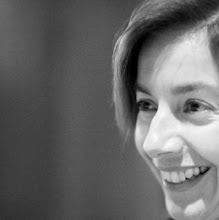Periodically, I reflect on the teachers who inspire me most. Here is my current list - with links to their teachings in case you are interested:
Ayya Khema
I read her books, I search her writings on the Web, I watch her videos, I listen to her Dharma talks, and I plan to go on a retreat this summer with her student, Leigh Brasington. It is one of my great regrets that she is no longer alive to dispense face to face teachings. I quote from her extensively in Mind Deep. Leigh has the most comprehensive Web page on her work.
Ajahn Chah
Often, I visit the old sage's website, and read his teachings at random. And each time, a new pearl of wisdom reveals itself. Ajahn Chah is the one teacher who validated the importance of 'the knot', and confirmed what I already knew intuitively.
Ajahn Sumedho
This now elder monk was a student of Ajahn Chah. I have recently delighted in his reflections on the nature of awareness. Just like Ajahn Chah, his teachings are direct, simple, and infused with deep wisdom. He used to be the abbott at Amavarati monastery in England, and has now retired to a monastery in Thailand.
U Tejaniya
I call him the 'attitude' monk. U Tejaniya's most noteworthy contribution centers around the importance of bringing the right attitude to practice. He is also more relaxed than most monks. U Tejaniya's teachings are freely available on his website. His Tricycle interview, The Wise Investigator, contains some very inspirational passages on how to use practice to successfully deal with depression. I am planning to attend a retreat with him next year.
Ruth Denison
Ruth is a formidable teacher, a very wise old woman whose way of living is as powerful a teaching as the words that she speaks. Retreating with her in the desert two years ago turned out to be such a blessing. And I am glad I kept a record, both with words and videos. Ruth never wrote a book - other than Sandy Boucher's biography, but that does not really count . . . , never made a movie, and recordings of her Dharma talks are scant. She has little interest in leaving a legacy. She just wants to keep on giving, in the present moment . . .
Gil Fronsdal
The Insight Meditation Center, Gil's community, is only 10 minutes from my house. Gil is my 'backyard' teacher. I always learn something from attending Gil's talks, all of which are available on AudioDharma. Gil has the gift of making sometimes obscure teachings into easily accessible dharma material.
The Insight Meditation Center, Gil's community, is only 10 minutes from my house. Gil is my 'backyard' teacher. I always learn something from attending Gil's talks, all of which are available on AudioDharma. Gil has the gift of making sometimes obscure teachings into easily accessible dharma material.
And of course, the teacher of all teachers, the Buddha himself. For an online source to the sutras, I go to Access to Insight. For good old fashioned paper books, I rely on In the Buddha's Words, and also The Middle Length Discourses of the Buddha.
With much gratitude.




